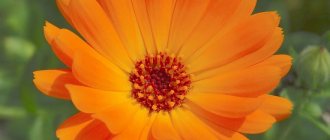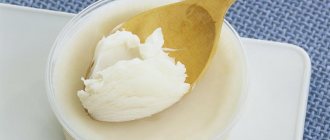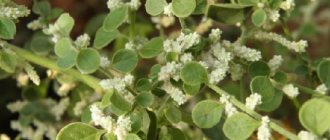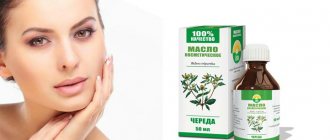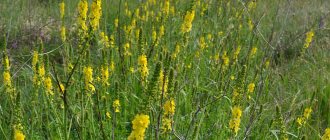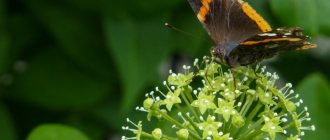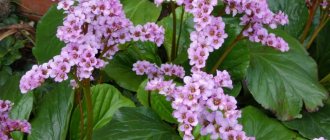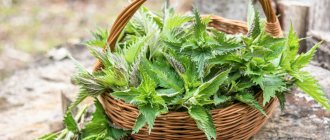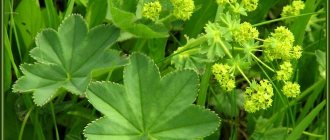Table of contents
- Medicinal properties of wormwood
- Use of wormwood in folk medicine
Wormwood is a plant that is mentioned many times in the Bible and depicts the retribution of sinners, suffering, and falling away from the Creator. In Russian folk songs, epics, and sayings, wormwood was often mentioned as a symbol of bitterness and melancholy...
The Holy Fathers also used wormwood in comparisons:
“Just as bitter wormwood is beneficial for those who have poor digestion, so it is beneficial for the evil-willed to endure bitter misfortunes: for these medicines bring health to those, and repentance to those.”
Venerable Mark the Ascetic
“Annoyance, humiliation and all similar cases in the soul of a novice are likened to wormwood bitterness, and praise, honor and approval are like honey. But wormwood cleanses all internal impurity, and honey usually increases bile.”
Venerable John Climacus
“...life, with the memory of God and following one’s conscience, in itself is an inexhaustible source of spiritual joys, compared with which earthly joys are like wormwood before honey...”
Saint Theophan the Recluse
Wormwood herb is very popular in our time for its medicinal properties. Quite frequently visited articles have been published on the Internet, which describe the properties of wormwood with incorrect illustrations: instead of the required wormwood, photos of common wormwood (Chernobyl) are displayed. However, anyone can make a mistake, so we will immediately present pictures of different types of wormwood:
There is a legend that in ancient Rome, wormwood was considered a gift from the goddess Artemis, and this perennial herbaceous plant was named after her - Artemisia absintium. It was believed that wormwood gives soldiers fearlessness and strength, relieves fatigue on long campaigns, relieves muscle pain, and protects against poisoning.
Wormwood grows everywhere: both in the village and in the city, it can be seen along roads and highways, in wastelands and forests. This is facilitated by the unpretentiousness of wormwood to soil composition and weather conditions.
The very strong aromatic, tart smell and very bitter taste of wormwood is used in the alcoholic beverage industry for the production of Absinthe and Vermouth. In some countries, wormwood is grown specifically for this purpose. By the way, vermouth is another name for wormwood.
The genus of wormwood is very numerous, they differ both in appearance and in chemical composition, therefore their medicinal properties are different. The most common species is wormwood and can be found in many countries and regions.
The stem and leaves of wormwood are silky, grayish-silver due to the abundance of tiny hairs on the upper surface of the leaves. This is a very important sign to find wormwood. On the bushing stems there are leaves, which become smaller and simpler closer to the inflorescences.
Baskets of small flowers are collected into a complex panicle inflorescence, from a distance reminiscent of a mimosa branch from old postcards, which is not a mimosa at all, but a silver acacia (by the way, the tropical mimosa hostilis itself was recognized as a drug).
In July-August, you can observe the rich silver inflorescences with golden splashes of flowering wormwood and inhale their specific “wormwood” smell.
Beliefs about wormwood and its place in the magical world
The attitude towards wormwood in ancient times was ambiguous. Wormwood was considered both a plant from God and from the Devil. The most powerful amulets against enemies were made from wormwood. The drug from it could cause terrible damage. Love potions were made from it. Therefore, it was believed that wormwood is a cursed herb. On the other hand, the smoke of wormwood protected against evil spirits. The smell of wormwood could drive away any of the most dangerous evil spirits. Its branches were hung over doors for protection. Fishermen took wormwood with them to scare away mermen and mermaids. And travelers wore a sash or bandage on the road, into which branches of this plant were sewn, and they were also placed in their shoes. This protected against fatigue, illness, and failure.
Be that as it may, everyone knows that wormwood is a bitter herb. And it is precisely this bitterness that has led to the fact that in folklore this plant is associated with nothing less than sadness and disappointment. But this grass is absolutely undeservedly offended.
Since ancient times, wormwood has found a use for itself. Cleopatra used wormwood essential oil in her eau de toilette. Courtesans rubbed themselves on it to seduce men. Priestesses of the fertility goddess Isis wore wreaths made of wormwood. They were woven on Ivan Kupala, they were used to tell fortunes, and they were hung in houses.
general characteristics
Wormwood, or Chernobyl, is distributed throughout Europe, North America, Western Asia and North Africa. This plant from the Asteraceae family can often be seen on sunny hills, wastelands, forest glades, and mountain slopes. Chernobyl is a tall perennial with a straight, branched stem covered with fluff and silvery leaves. This herb blooms with yellow flowers, collected at the top of the stems in small, discreet baskets. During the flowering period, the plant secretes a resin that protects it from insects.
Content:
- general characteristics
- Chemical composition
- Benefits for humans
- Wormwood in folk medicine
- Natural medicines from Chernobyl
- Use in the food industry
- How to properly collect and prepare
- Possible side effects
Wormwood was known as a medicinal plant in ancient Babylon and Assyria, and the father of medicine, Hippocrates, mentions it in his works as a potion for jaundice and stomach diseases. In Algeria, an alcoholic infusion of wormwood is taken as a medicine against malaria. This plant is also known as a universal remedy against pests. Interestingly, in ancient times, wormwood juice was added to ink to repel mice from books. To drive moths away from various fabrics, they were also sprinkled with grass juice. And bouquets of this plant placed indoors will help get rid of flies. Interestingly, pets can also experience the benefits of wormwood. If cats or dogs are bothered by fleas, it is enough to bathe the animals in a strong Chernobyl decoction. The same decoction can be used to disinfect animal wounds. And wormwood infusion will come to the aid of gardeners and gardeners when they need to get rid of annoying caterpillars.
In addition, in ancient times, people believed that this bitter plant protected against witchcraft. It was believed that wormwood growing in the garden drove away evil spirits from the house.
Use of wormwood in ancient times
Wormwood was widely used - its beneficial properties were manifested not only in witchcraft rituals. The herb wormwood is also used for economic purposes. Dyes for fabrics have long been made from it. Decoctions and infusions were sprayed on beneficial plants to rid them of pests. Wormwood was placed in houses to prevent moths. It was used to treat animals.
In Rome, the winners of chariot races were given wine with wormwood as a prize to improve health. In Rus', it was used to heal wounds and draw out pus, and to treat fever.
Wormwood smoke was used as a disinfectant for cholera and other infectious diseases. It was used to fumigate hospitals and patients during wars and epidemics. Wormwood was scattered in courtrooms in England to prevent the spread of “jail fever.” Wormwood helped against fleas and lice for those who were at the meetings.
A great expert on poisons, Queen Marie de' Medici of France used it against the bites of poisonous snakes.
In China, active points on the human body were burned with wormwood cigarettes.
Possible health benefits
Traditionally throughout Europe and in Traditional Chinese Medicine, mugwort has been used to treat a variety of ailments.
For example, it has been smoked or the dried leaves eaten to promote lucid dreaming, although there has been little research on this.
Others who consume this plant suggest that it has antibacterial properties, but again, only a few studies have been conducted on this issue.
Below are some other examples of the potential health benefits of mugwort.
Moxibustion (moxibustion with wormwood)
The main use of wormwood is in a method called moxibustion. It involves burning the herb over a specific part of the body depending on what the practitioner is trying to achieve.
Moxibustion can also be used during acupuncture to enhance the effectiveness of this ancient Chinese practice.
There is some evidence to suggest that moxibustion may help prevent or correct breech births, which in turn may help reduce the need for so many caesarean sections.
One 2012 review suggests that moxibustion can be used either alone or in combination with acupuncture or postural techniques. The 2021 review also noted that moxibustion resulted in decreased oxytocin use compared to no treatment.
Oxytocin reduces stress, calms and helps with pain during childbirth. The fact that it was less necessary when cauterization was used is remarkable.
Arthritis relief
One 2021 review found sufficient evidence to suggest that moxibustion is effective in reducing pain and relieving symptoms in patients with knee osteoarthritis.
This supports a 2021 review that suggested moxibustion may be useful as an alternative in the treatment of knee osteoarthritis.
Benefits for digestion
Wormwood may also be effective for a number of digestive disorders, including:
- low appetite
- colic
- indigestion
- diarrhea
- constipation
- motion sickness
- stomach acidity
However, most of the evidence to support these claims is not scientifically confirmed, but is taken from eyewitnesses.
Menstrual relief
Some also believe that mugwort can help relax the uterus and thereby induce a late menstrual cycle and ease any cramping associated with it.
There is also limited evidence to suggest that moxibustion may reduce both the frequency and severity of hot flashes associated with menopause. This is based on a single 2009 study of 51 perimenopausal and postmenopausal women that included a control group.
Cancer treatment
There is limited evidence to suggest that some types of mugwort may be effective in treating cancer cells. However, the results of one 2013 study show that California mugwort's cell-killing ability extends to both cancerous and normal human cells.
A 2021 review of multiple studies on moxibustion concludes that it may help reduce chemotherapy symptoms and improve quality of life, but continued research is needed to confirm this.
Varieties of wormwood
The healing properties of wormwood are not forgotten today. But, before using it, you need to understand exactly what types of wormwood are represented. Therefore, it is reasonable to ask the question: what kind of wormwood is there?
There are about four hundred species of wormwood. And some varieties of wormwood are not only not useful, but also poisonous if used without the appropriate knowledge. These include Tauride wormwood. It is known that during the war with Persia, Peter the Great lost five hundred horses that ate this grass in just one night. Although experts extract from it substances used in the treatment of pneumonia, bronchial asthma, and rheumatism.
Wormwood paniculata is also poisonous. But this type of wormwood oil is used to combat urolithiasis.
Wormwood is traditionally used against roundworms. Flower baskets are used for this. Previously, santonin was extracted from its inflorescences to get rid of parasites. But it has now been revealed that this substance is too toxic, and therefore its use has been limited to veterinary medicine. But its essential oil has a bactericidal, analgesic and anti-inflammatory agent.
Other species include wormwood, God's tree. Its other name, “medicinal wormwood,” is also known. It can be distinguished from other species by its appearance and lemon aroma. It was this tree that was the cult tree for the Slavic peoples. For a long time, such wormwood grew exclusively in monastery gardens. Hence the name. And now it is used in the treatment of certain diseases and as a seasoning.
Few people know that such a common seasoning as tarragon is another type of this plant: tarragon. Unlike all other species, its leaves do not have bitterness. That’s why it is regularly used in canning cucumbers and tomatoes, and added to meat, soups, and vegetables. And vinegar with tarragon was produced for a long time exclusively in the Caucasus and cost a lot of money.
But, perhaps, the most common types of wormwood are “wormwood” and “common wormwood.” They are similar in appearance and in their many beneficial properties.
Wormwood is an ornamental plant that can decorate a garden plot for a long time. Low-growing varieties will look great among stones and on retaining walls. But tree-like, tall wormwood will hide not very good places. In addition, other flowers will look great against its background. White wormwood or silver wormwood perfectly sets off their bright colors. For example, the combination of wormwood and roses in the garden is great. But where wormwood grows, only very unpretentious plants can grow.
Chemical composition
There are many varieties of wormwood and not all of them have healing properties. In addition, some varieties are difficult to distinguish from each other. In herbal medicine, branches, leaves and flowers of herbs rich in chemical components are used. Wormwood leaves, for example, contain glycosides, essential oil, flavonoids, tannins, organic acids, and vitamin C.
Recent studies have indicated the presence of specific compounds in wormwood leaves, which actually give the plant a bitter taste. In addition, it turned out that these substances also have antispasmodic and antiseptic properties. Other components found in wormwood include flavonoids, tannins and minerals; in particular, the plant contains a lot of potassium.
No less beneficial for humans is wormwood oil, which is obtained by steam distillation from the leaves and flowers of the herb. Chernobyl essential oil contains 28 active ingredients, and they make up 93% of the total chemical composition of the substance. But among the chemical elements in wormwood there is also a dangerous thujone, which, however, is removed from the plant during the alcohol production process.
Medicinal properties of wormwood
If we answer the question of how wormwood is useful, then, first of all, we must talk about its very extensive medicinal qualities.
Wormwood is rich in its chemical composition - its medicinal properties are explained precisely by this. The taste of wormwood is so bitter because of the lactones. In addition, it contains tannins, saponins, organic acids, carotene, essential oil, ascorbic acid, calcium, potassium, magnesium, zinc, cobalt, molybdenum, aluminum, nickel, bromine, boron, vitamin C.
The leaves, tops, roots and seeds of wormwood have beneficial properties.
The bitterness of wormwood helps stimulate the gastrointestinal tract, improves digestion and urine output. Wormwood is used in the treatment of gallbladder diseases. This may be inflammation of the gallbladder, disruption of the normal flow of bile, or stones in the gallbladder. And they, as you know, are accompanied by such unpleasant symptoms as loss of appetite, weakened digestion, a feeling of heaviness, and flatulence. If disturbances in the functioning of the gallbladder are insignificant, then wormwood tea will help. Moreover, it is better to drink it without sugar. Because, firstly, the bitterness of wormwood does not combine well with sugar, and, secondly, it can reduce its beneficial properties.
Treatment with wormwood is also effective for diseases of the stomach and digestive system. Thus, wormwood juice stimulates appetite, regulates the functioning of the stomach and pancreas, normalizes acidity, relieves bloating, and relieves inflammation in the intestines.
Wormwood is notable for its selective effect on the body. Thus, wormwood calms during times of nervousness, increased excitability, and insomnia. But in case of depression, weakness, fatigue, it tones.
Wormwood exhibits medicinal properties as an antipyretic, anticonvulsant, anti-inflammatory, analgesic, choleretic, and wound-healing agent. It normalizes blood pressure, relaxes, and has a hypnotic effect. Wormwood also helps against worms.
Cleansing the body with wormwood, in this case, should be carried out as follows: 100 gr. dried herb is crushed into powder, taken a teaspoon with water. For the first three days, this should be done every two hours. Then - less often. This treatment lasts approximately one week.
Treatment with dry wormwood is recommended in this case because the powder, unlike decoctions and infusions, reaches the most distant parts of the intestine. It is recommended to use wormwood in this way against parasites twice a year. The so-called “Russian triad” also gives a good effect in the fight against parasites: tansy + wormwood + cloves. In this case, tansy and wormwood destroy round and tapeworms, fungi, viruses, and cloves, in turn, get rid of larvae and eggs.
Wormwood also helps against Giardia, herpes, Trichomonas, Candida, and Echinococcus. While such a cleansing with wormwood is taking place, you should simultaneously douching with wormwood and enemas from it. For these purposes, you can infuse two teaspoons of wormwood in a liter of boiling water.
By the way, douching is recommended for women periodically, even if they are not being treated for parasites. After all, among other things, wormwood also helps with gynecological diseases and diseases of the genitourinary organs. Moreover, if the violations are serious enough, then you can leave a cotton swab soaked in wormwood in the vagina overnight.
If we talk about ladies, many may be interested in whether wormwood helps with weight loss. Due to the fact that it improves metabolism, it is widely used for excess weight. To do this, take wormwood tincture three times a day, one tablespoon, 15 minutes before meals. True, not from alcohol, but from 2 teaspoons of herbs and a glass of boiling water.
Another question that often arises among the fair sex is whether wormwood can be used during pregnancy. And although wormwood is an extremely healthy herb and it has long been believed that wormwood helps with conception, it should not be consumed while carrying a baby. It can lead to miscarriage. Previously, potions were made from it to get rid of an unwanted child.
But for difficult childbirth and female diseases, wormwood has also been widely used for a long time. By the way, this also applies to diseases in men. For example, an infusion of a teaspoon of the seeds of this plant and a glass of boiling water will help with impotence. It is infused for 10 minutes and drunk in small sips throughout the day.
The properties of wormwood allow it to be used externally. Compresses are made from crushed herbs to treat ulcers, wounds, skin inflammations, and abscesses. Wormwood juice is also used for this.
A wormwood bath will help with gout. To do this, you need to finely chop the root of the plant, add water and let it brew for three hours. After this, boil for 10 minutes, strain and pour into the bath. This bath is taken daily for two weeks for 15 minutes before bedtime.
The most common infusion is wormwood. To do this, you need either dry wormwood in the amount of half a tablespoon, or a whole spoon of fresh herbs. It needs to be poured with a glass of boiling water and left for half an hour in a closed container. This wormwood drink perfectly helps with ulcers, women's diseases, inflammation of the kidneys and bladder. It has an expectorant and diuretic effect. It is taken half an hour before meals, one tablespoon three times a day. But if you add thyme to this infusion, it will help with alcoholism.
For the same purposes, a decoction of wormwood is used. To prepare it, use the same proportions of water and wormwood as for infusions, but the decoction must be brought to a boil and simmered for about twenty minutes.
Inhalations using wormwood oil are effective for treating the respiratory system. And if this oil is mixed with olive oil, then this mixture can replace drops for a runny nose. Moreover, you can not buy ready-made essential oil, but prepare your own healing potion, which is based on wormwood: the herb is put in a bottle, filled with olive, linseed or corn oil, closed and infused for ten days. When the oil turns pearlescent or dark green, it should be strained and stored in a cool place.
The benefits of wormwood are recognized by official medicine. Various medicines are made from it: wormwood tincture with alcohol is sold in pharmacies. This tincture of wormwood is used for ulcers, gastritis, liver and kidney diseases, anemia, anemia, migraines, obesity, flatulence, hypertension, edema, insomnia, bad breath, heartburn, gout, neurasthenia. It is used three times a day, 15–20 drops before meals.
Wormwood tincture can also be prepared at home: 5 tbsp. l. seeds need to be poured with half a liter of vodka. This mixture is aged for three weeks. It needs to be stirred periodically, and after the expiration date, strain.
An analogue of the tincture can be wormwood vodka: here, instead of seeds, a teaspoon of wormwood oil is used for the same amount of vodka. It infuses for seven days.
Wormwood extract is taken 10-30 drops before meals three times a day. It is used for the same purposes as the tincture.
Wormwood ointment is used to heal wounds, ulcers, fistulas, frostbite, and burns.
In addition to wormwood, common wormwood, or Chernobyl, as it is otherwise called, also has beneficial properties. Its decoctions and water infusions constrict blood vessels well, soothe, increase appetite, stimulate digestion, and have a hemostatic, anticonvulsant, antipyretic, antifever, and tonic effect. Wormwood is used as a sedative for neurasthenia and an analgesic for intestinal colic.
This type of wormwood is present in Zdrenko’s mixture. She is being treated for bladder papillomatosis and anacid gastritis.
A decoction of the roots is used for leucorrhoea, edema, convulsions, epilepsy, and roundworms. In addition, an extract from the aerial part and roots of wormwood is used for cancer of the rectum, stomach and uterus.
It is used for delayed menstruation or too painful periods. In the first case, take half a glass of infusion from a tablespoon of wormwood and half a liter of boiling water three times a day. In the second case, use a decoction of wormwood. And if you replace the grass with roots and make an infusion from them, it will help with scanty menstruation.
Wormwood juice mixed with honey in a ratio of 1:10 helps with strokes.
Atherosclerosis is treated with the following recipe: grind a head of garlic into a pulp, chop 2-3 tablespoons of Chernobyl leaves. Mix with garlic and pour a bottle of hot dry wine. Let it brew for five days, strain and squeeze. Take 2-3 tablespoons of this drink before meals three times a day.
If you still have questions about how to take wormwood, then wormwood will treat severe colds and coughs. Before going to bed and eating, you can drink one tablespoon of the following infusion: a tablespoon of common wormwood per half liter of vodka. After three days you can begin treatment. True, it’s still not worth abusing it.
In addition, wormwood can treat hangovers. To do this, you can use a spoonful of wormwood infused for an hour in a glass of boiling water. By the way, before the party it’s better to play it safe and drink half a glass of this infusion. Then you can avoid intoxication. It lasts for about six hours.
External use is also acceptable for wormwood.
In case of hemorrhage in the eye, the following compress will help: crushed wormwood is packed in cotton cloth, this bundle is briefly immersed in boiling water, when it cools down a little, it must be applied to the eye.
Wounds should be washed with wormwood juice, and a compress of equal parts of wormwood juice and honey should be applied to bruises.
How to properly collect and prepare
Best materials of the month
- Coronaviruses: SARS-CoV-2 (COVID-19)
- Antibiotics for the prevention and treatment of COVID-19: how effective are they?
- The most common "office" diseases
- Does vodka kill coronavirus?
- How to stay alive on our roads?
Dried wormwood either does not contain thujone at all or is present in negligible quantities, which makes the dry plant safe for consumption. A medicinal infusion of Chernobyl is prepared from half a teaspoon of dry herbs and a glass of boiling water, the mixture is infused for 15 minutes. You can give a little more herb, but in this case the result is a very bitter infusion that is impossible to drink. The same applies to drinks aged for more than 15 minutes.
But no matter how bitter wormwood tea is, it is undesirable to add sweeteners to it, since sugar affects the medicinal properties of the herb. You can minimize the bitter taste by adding mint and anise to your tea. Wormwood is drunk in small sips.
Wormwood for beauty preservation
In addition to getting rid of diseases, wormwood also helps preserve beauty.
If you have oily hair, you can wash your hair with wormwood infusion: pour a glass of fresh chopped herbs into 2.5 liters of boiling water and leave for half an hour.
The following recipes will help slow down skin aging:
- 250 gr. dry wormwood, pour two liters of boiling water. Let it brew for half an hour. Pour the strained infusion into the bath. Take it for 20 minutes one hour before bedtime.
- Fill 2/3 of a half-liter bottle with sunflower seeds. Add 2 tablespoons of vinegar and 4 tablespoons of chopped wormwood. Close the bottle and place in a bright place. Leave for two weeks, shaking the contents daily. Then strain. This oil is good for massage. By the way, it will also help against cellulite.
Contraindications to the use of wormwood
But, despite such a huge number of beneficial properties, wormwood is far from harmless - there are significant contraindications to its use. As already mentioned, it should not be used by pregnant women. In addition, it is also dangerous during breastfeeding, with low acidity in the body, and with diseases of the intestines and stomach in acute forms. And of course, it should not be used by those who are allergic to wormwood. Even if there are none of the above restrictions, you still need to be very careful about how to drink wormwood. Too large doses, prolonged treatment, that is, uncontrolled use of wormwood can lead to convulsions, vomiting, fainting, nervous system disorders, and hallucinations. Therefore, it does not matter what exactly wormwood is used for - treatment should not be delayed for more than a month. It's better to take a break and then continue.
Another use of wormwood
There is another use for wormwood that has not been mentioned. Its essential oil is used to make an alcoholic drink such as absinthe. By the way, translated from French the word “absinthe” means “wormwood”. This drink is very, very strong - 70 degrees. Its history is as old as wormwood itself. At one time they were also offered treatment. And very quickly this drink gained popularity. But intoxication with absinthe is different from intoxication with regular alcohol. It is closer to the intoxication of marijuana. And if absinthe is useful in small quantities, then in large doses it can cause nervous disorders. That's why it is banned in many countries. But the famous “Riga Balsam”, which also contains wormwood, is still sold and loved by many.
Back | All news
